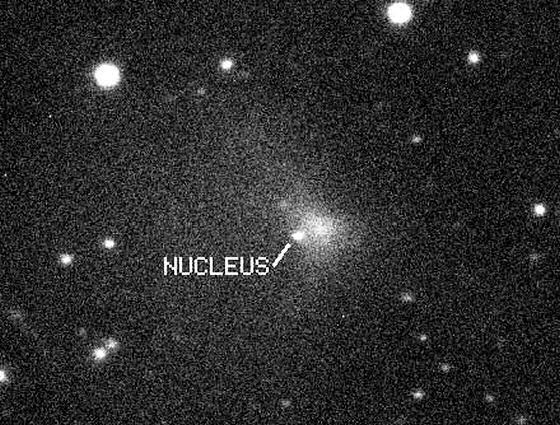Alternative names 2000 EC98, 2002 GJ27 Observation arc 13264 days (36.31 yr) Inclination 4.3445° Asteroid group Centaur | Discovery date 3 March 2000 Minor planet category Centaur Discovered 3 March 2000 Orbits Sun | |
 | ||
Pronunciation /ᵻˈkɛkləs/ e-KEK-ləs or /ˈɛkᵻkləs/ EK-i-kləs Discovery site Kitt Peak National Observatory Similar 166P/NEAT, 52P/Harrington–Abell, 44P/Reinmuth | ||
60558 echeclus icarus a film by sean curtis patrick
60558 Echeclus (e-KEK-ləs or EK-i-kləs) is a centaur in the outer Solar System. It was discovered by Spacewatch in 2000 and initially classified as a minor planet with provisional designation 2000 EC98 (also written 2000 EC98). Research in 2001 by Rousselot and Petit at the Besançon observatory in France showed no evidence of cometary activity, but in late December 2005 a cometary coma was detected. In early 2006 the Committee on Small Bodies Nomenclature (CSBN) gave it the cometary designation 174P/Echeclus. It next comes to perihelion in April 2015, and is expected to reach about apparent magnitude 16.7 near opposition in September 2015.
Contents
Name
Echeclus (Greek: Έχεκλος) is a centaur in Greek mythology.
60558 Echeclus is only the second comet (after Chiron) that was named as a minor planet, rather than after the name of its discoverer. Chiron is also a centaur; other centaurs are being observed for signs of a cometary coma.
Besides Chiron, three other objects are cross-listed as both comets and minor planets: 7968 Elst–Pizarro (133P/Elst–Pizarro), 4015 Wilson–Harrington (107P/Wilson–Harrington), and 118401 LINEAR (176P/LINEAR).
Chunk
On 30 December 2005, when 13.1 AU from the Sun, a large chunk of Echeclus was observed to break off, causing a great cloud of dust. Astronomers have speculated this could have been caused by an impact or by an explosive release of volatile substances.
2011 outburst
Echeclus appears to have outburst again around June 2011 when it was 8.5 AU from the Sun. On 24 June 2011, follow up imaging with the 2 meter Haleakala-Faulkes Telescope South showed the coma of Echeclus to be very close to the sky background limit.
Orbit
Echeclus came to perihelion in April 2015.
Centaurs have short dynamical lives due to strong interactions with the giant planets. Echeclus is estimated to have an orbital half-life of about 610,000 years.
